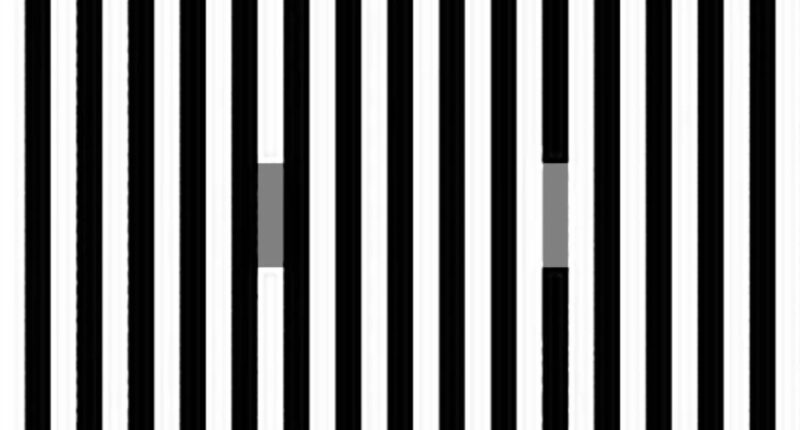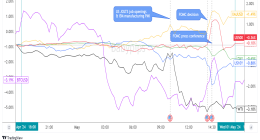SCIENTISTS may have finally solved the mystery behind the simultaneous contrast illusion.
This describes a type of optical illusion that tricks the eyes into seeing a grey bar as lighter on one end than the other.
One of the most popular versions of this illusion comprises an image showing black bars set in front of a white background.
On both sides of the image, there is a smaller gray bar, with the one on the left appearing darker than the one on the right.
While the two grey bars in the figure are the same shade of gray, our mind perceives them as different.
Now, a team of researchers from the University of Exeter may have unraveled the mystery behind why this happens.
The team’s findings were published in the journal PLOS Computational Biology.
They posit that the illusion is caused by the limited bandwidth of the human eye.
To come to this conclusion, the researchers developed a computer model that mimicked the way the human eye perceives visuals.
However, in the presence of high contrasts, they noticed that the model would become overstimulated and its visual perception would become distorted.
Most read in News Tech
“Our model shows how neurons with such limited contrast bandwidth can combine their signals to allow us to see these enormous contrasts, but the information is ‘compressed’ – resulting in visual illusions,” Dr. Jolyon Troscianko, one author of the study, told Science Focus.
“For example, some neurons are sensitive to very tiny differences in grey levels at medium-sized [ranges], but are easily overwhelmed by high contrasts,” said Dr. Troscianko.
“Meanwhile, neurons coding for contrasts at larger or smaller scales are much less sensitive, but can work over a much wider range of contrasts, giving deep black-and-white differences,” he added.
The new findings throw into question a lot of long-held assumptions about how visual illusions work, Dr. Troscianko noted.
Moreover, the new study provides a deeper understanding of how this illusion, and potentially others, work.
Studies like this could also help us develop new ways to improve visual perception.











